A few years ago, we visited the Delta Flight Museum down at Hartsfield-Jackson International Airport. It did not disappoint and I’m happy to report the museum has grown despite the pandemic.
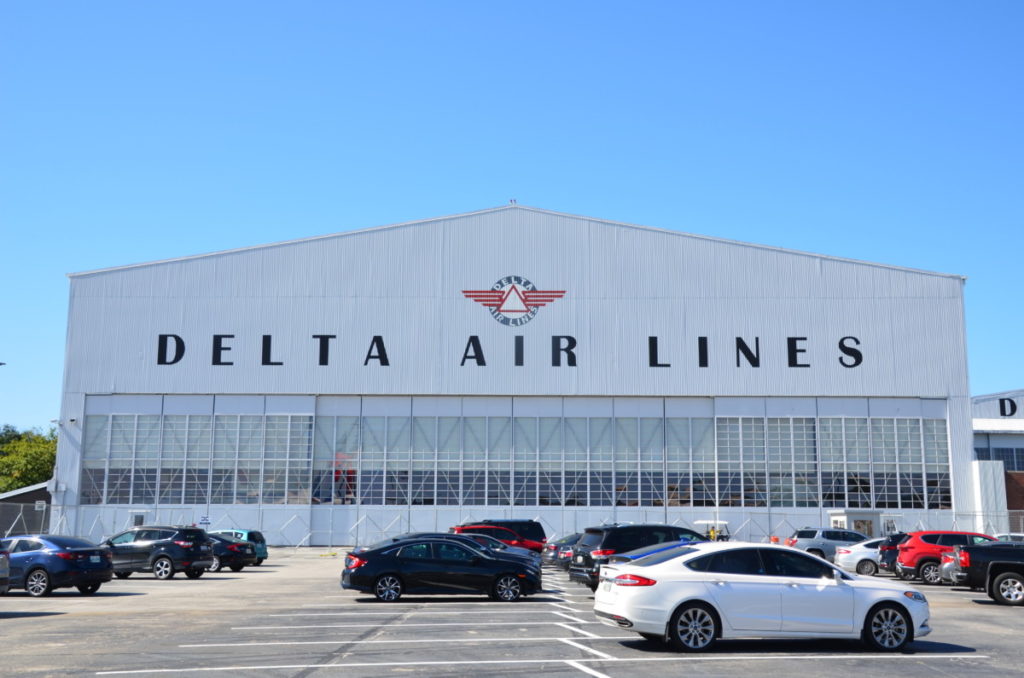
The 747 Experience
One of the newer exhibits is the 747 Experience. Featuring Ship 6301, the first Boeing 747-400 ever built resides permanently in the parking lot across from the museum’s hangar. Delta employees greeted us inside the plane as if we were taking a flight. They encouraged us to ask questions as we embarked on the self-guided tour.
First Class
Starting with first class, I noticed the staircase to the upper deck wasn’t spiral-shaped. I quickly learned Boeing constantly improved upon the original 747 over the years. The iconic spiral staircase went by the wayside with the 747-300 model in the early 80’s. This 747-400 model began service with Northwest Airlines in 1989 and took its final flight with Delta in 2015.
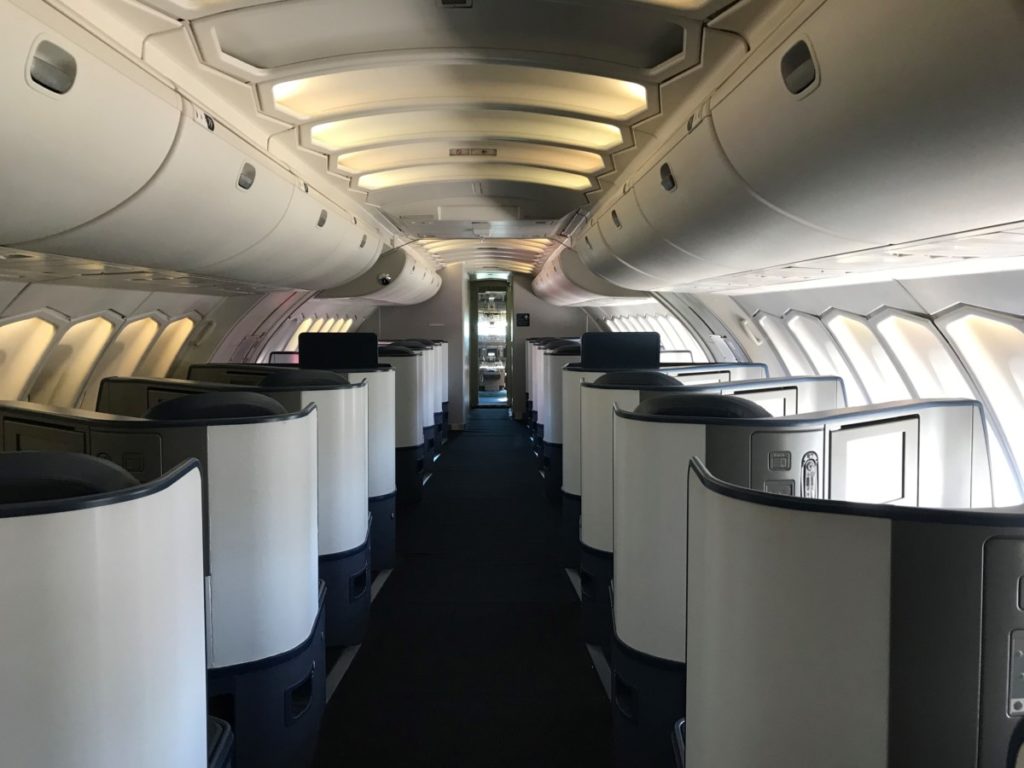
My first trans-Atlantic flight was on Pan-Am from NYC to London when I was a kid. (Our return flight was on Braniff from Paris to Dallas, so that dates me a bit.) I remember climbing up and down those spiral stairs several times during the 8-hour flight because I thought it was so cool. I had only taken my first plane ride ever three days before (Shreveport to NYC) and now we were on a two-story jet! For whatever reason, both my parents and flight attendants seemed okay with me walking through first class.
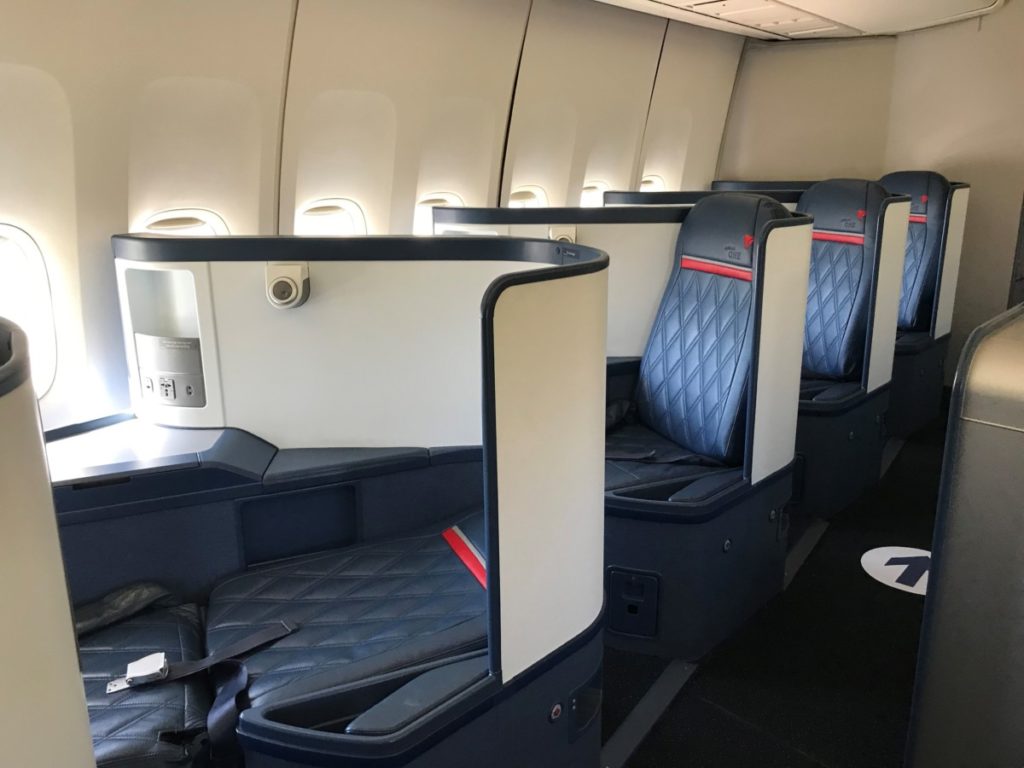
Well, first-class design on a 747 changed a lot since that flight. Instead of orange carpeting and bigger seats, the first-class cabin featured individual pods. The only time I’ve flown first-class overseas was before Delta acquired 747s during their merger with Northwest Airlines. The L-1011 first-class cabin was nothing like this. Now, passengers can recline to a horizontal position to actually sleep, watch their own television screen with their choice of programming, and have their own personal space without touching another human.
The 747 Flight Deck
It’s a bit unsettling to see the cockpit in an airplane. I’m amazed that pilots can spend hours in such a tiny, confined space with windows smaller than a car windshield. Then, the dizzying array of buttons, switches, and gadgets overwhelm me because I have no idea what they do. When exiting a plane, I usually nod to the pilot with gratitude thinking, “Better you than me in that cockpit.”
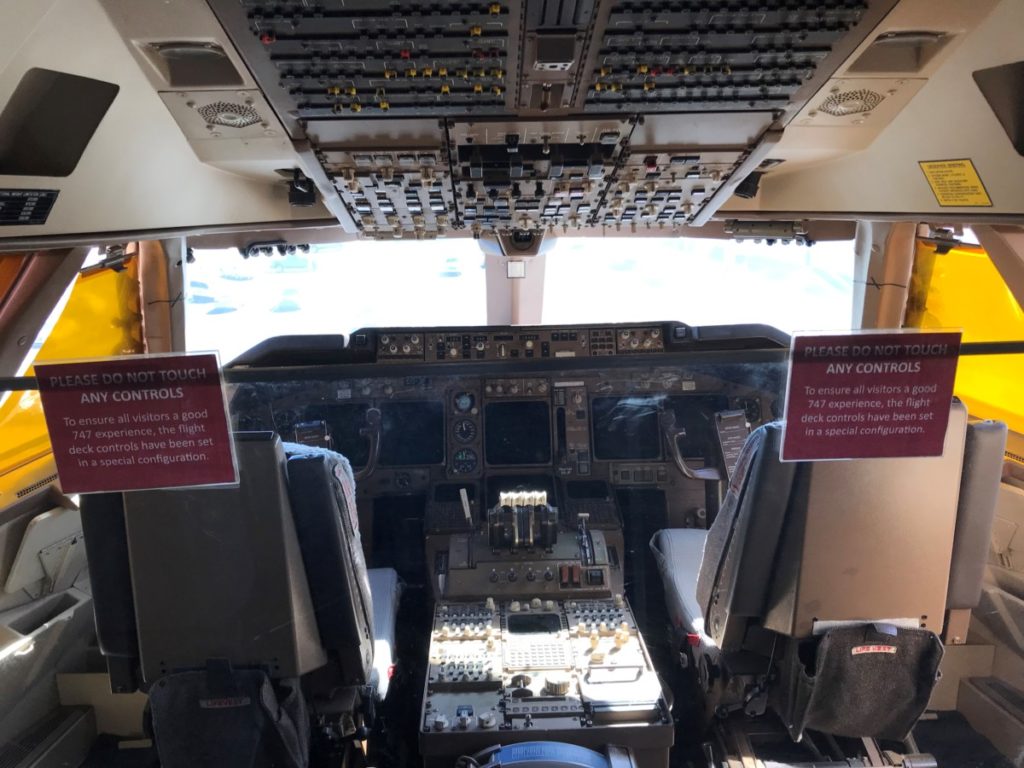
Without knowing much flight terminology, the 747-400 features a glass cockpit. That means that before the television-looking screens with electronic flight data (shown in the photo above), pilots relied on analog dials. I don’t even want to think about that. The 747-400 was also the first 747 model to use a two-man crew, eliminating the need for a flight engineer.
The 747 Main Cabin
When you take all the seats out of the 747, you could have a party. And Delta does – the museum hosts dinners, weddings, and other events in the space for a large sum.
Exhibits on the walls presented a history of the 747. Dubbed “The Queen of the Skies,” Boeing’s 747 changed air travel when it first launched in 1970. Almost tripling passenger seating capacity with the double aisle configuration, the first 747s even had a lounge on the upper deck. (By the time of my first flight, additional first-class seating replaced the lounge area.) The combination of increased passenger load and more efficient fuel consumption allowed airlines to lower fares.
As international travel expanded to the masses, airports had to keep up. They had to design larger waiting rooms, build longer runways, and even beef up staffing at customs. Even those catering trucks added lifts to reach the increased height of the plane.
With the ceiling cut out, we could see all the ductwork above. Walking to the rear of the aircraft, the exposed 60-foot pressure dome protects the fuselage during in-flight air pressure changes. In the corner, a tiny set of stairs, more like a ladder, gave us a peek into the tiny sleeping area for the crew.
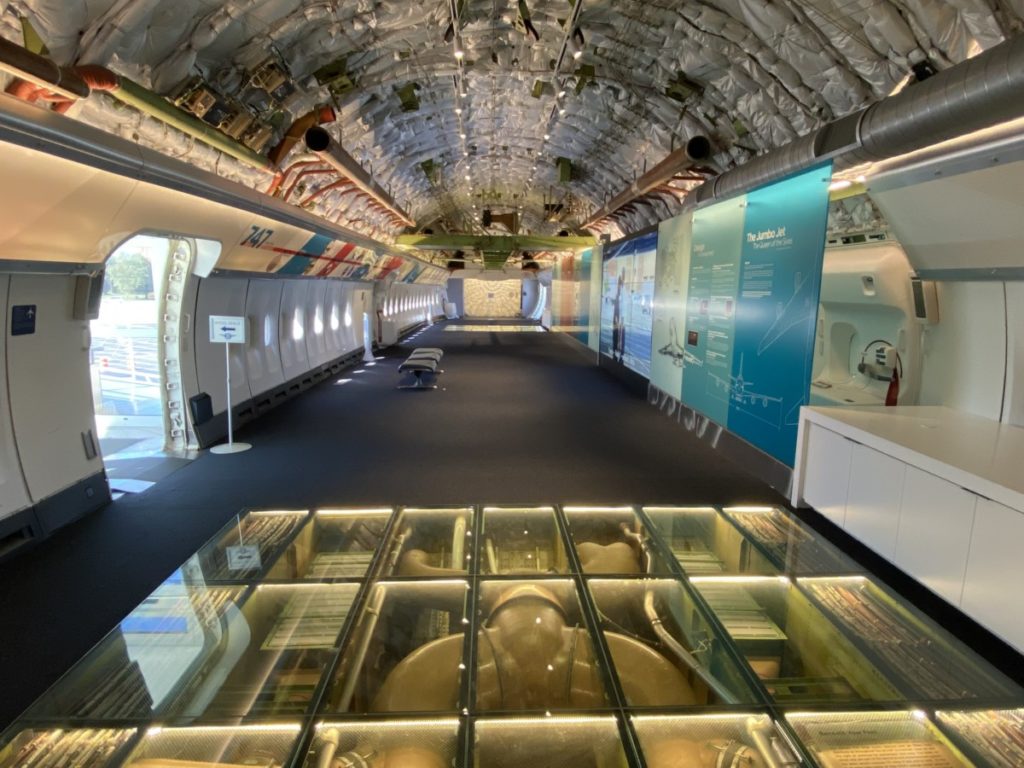
Below our feet, glass tiles revealed what lies below the main cabin. The big orange tank is one of 8 fuel tanks that carry over 55,000 gallons of fuel. In addition, the electrical wiring, lavatory waste pipe, and air filters for temperature control all reside down here.
Wing Walk
The 747 Experience features a wing walk. Exiting the doors mid-cabin, we stepped out onto a metal railed area on top of the wing. With a wingspan of 211 feet, I realized pilots are steering a plane with a width over half the size of a football field. Now I know why they go so slow on the ground to get to and from the runway.
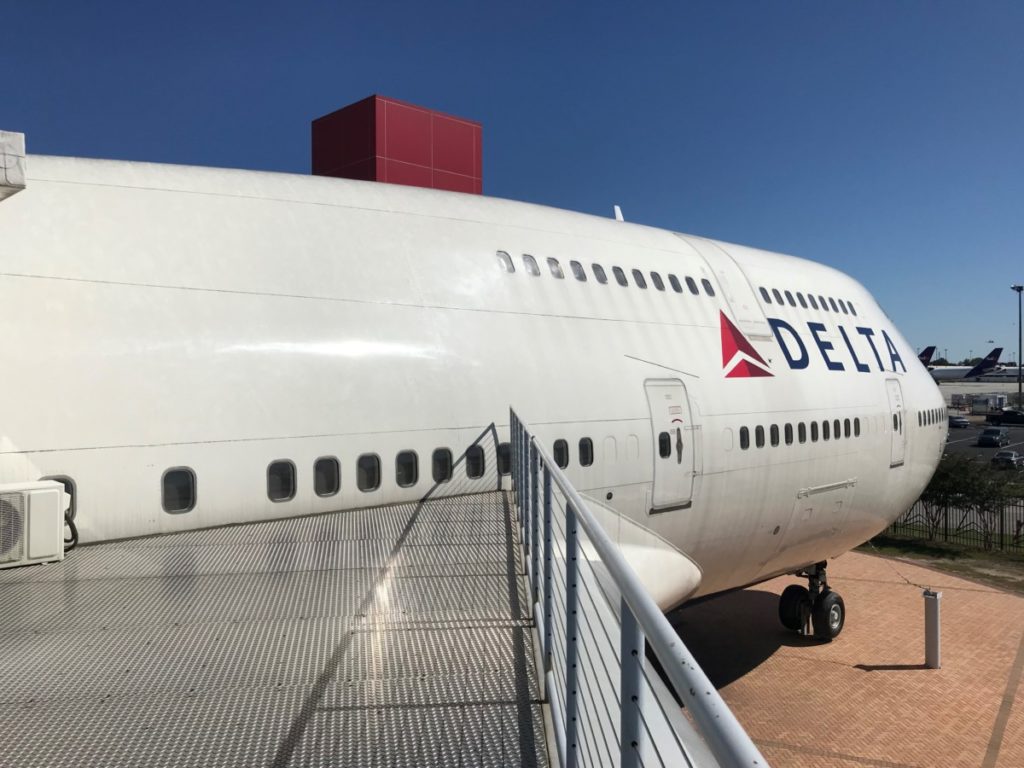
Conclusion
After departing the 747, we walked around the plane’s undercarriage. Everything seemed so much bigger when being up close.
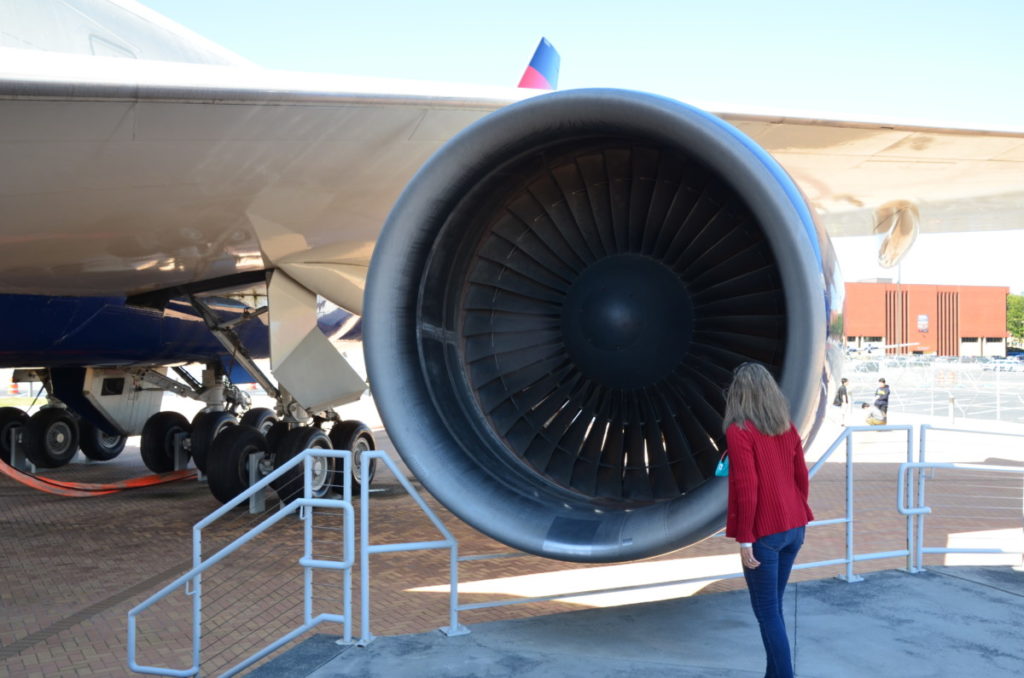
If 747’s are so great, what’s happening to them now? Technology is rapidly changing. Airlines have switched to the more efficient, twin-engine wide-body jets like the Boeing 777 and Airbus 350. Sadly, only a handful of airlines still fly 747s for passenger service today, the biggest being Lufthansa with 27 remaining in their fleet.
For more information, visit their website here.
